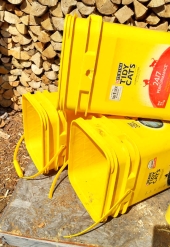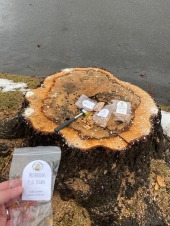



wayne fajkus wrote:
I am not sure if groundfos is the only pump or if there are cheaper alternatives with ick free auto (dry) shutoffs. If there are, i'd love to hear about them.


William Bronson wrote:Fish skin,that's where it's at!
Seriously though, it's thing.
Ever since I found out about alligator gar I've wanted a jacket made of the skin!
thomas rubino wrote:And here in the mountains, with 300' of vertical drop, water arriving at the hydrant in the yard is at 125 psi.
Not even commercial hoses last more than a few hours.
I must purchase a 200-psi industrial air hose and have hose bib ends installed.
Any other hose will burst from the pressure.

Andre Wiederkehr wrote:
Any foresters out there who can comment on best practices for harvesting trees? Is it always better for forest health to take exclusively live trees, or is a mix of live and dead sometimes okay or even preferable? What about the idea of preferentially removing "diseased" trees? After all, these are going to be snags soon enough....

